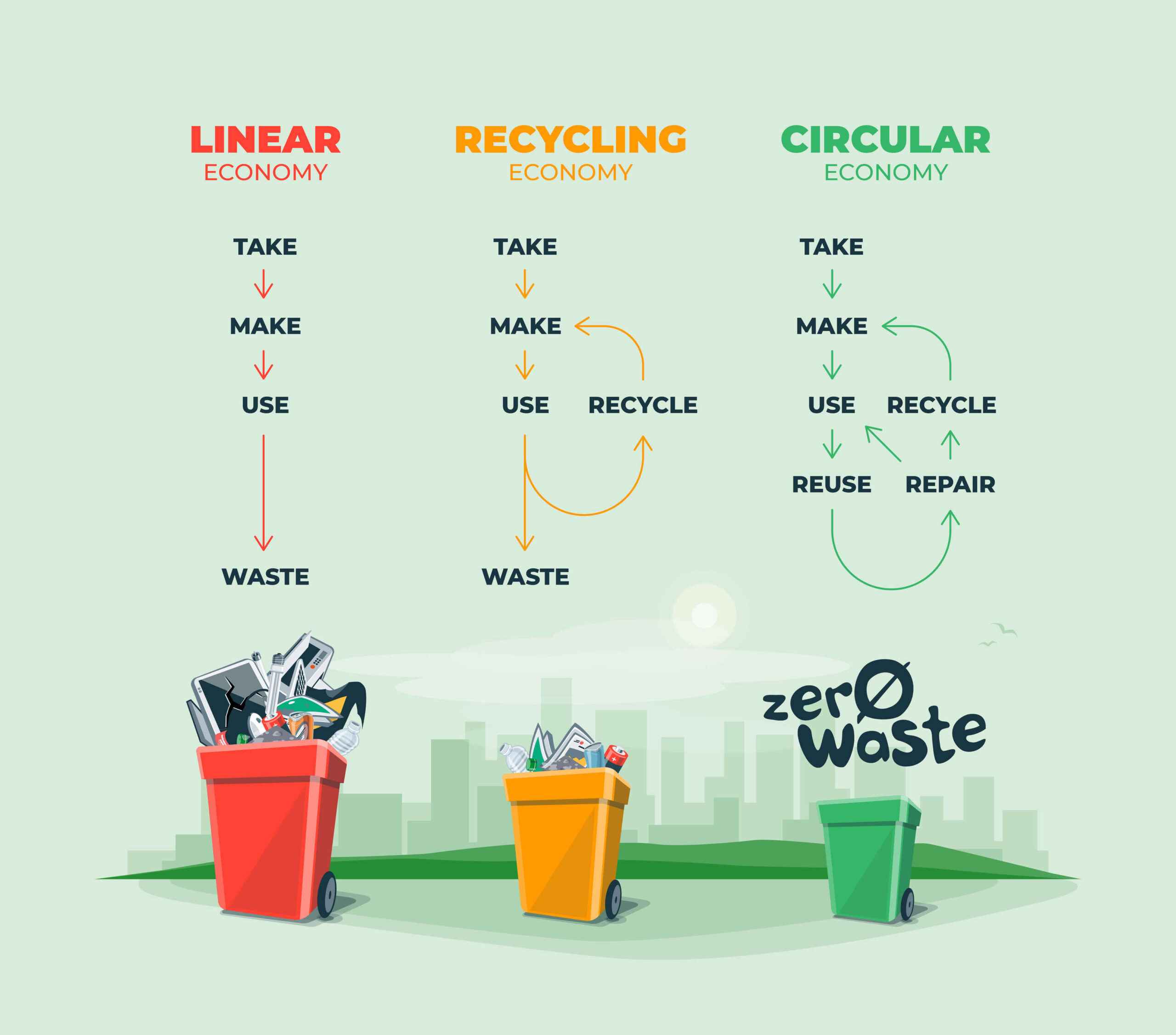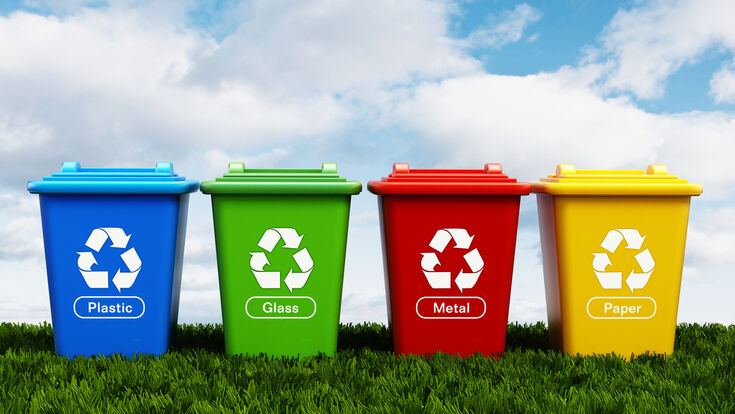Discover the Perks of Recycling Lives Services for Your Organization
Discover the Perks of Recycling Lives Services for Your Organization
Blog Article
Understanding the Classification and Handling of Various Kinds Of Waste
Efficient waste monitoring is critical for environmental sustainability, calling for an extensive understanding of the category and handling of numerous waste kinds. House waste, commercial by-products, dangerous materials, electronic refuse, and organic remnants each require distinctive procedures to make sure safety and security and lessen eco-friendly damages. Implementing correct segregation, therapy, and disposal strategies is important to reduce unfavorable environmental effects and promote source conservation. For instance, the composting of organic waste contrasts greatly with the intricate procedures required to manage dangerous compounds. This complex technique to throw away administration underscores its intricacy and the critical demand for specialized expertise in this domain.

Home Waste
Household waste, encompassing a broad selection of thrown out materials produced from day-to-day living activities, stands for a substantial component of the general waste stream - recycling lives services. This classification consists of natural waste such as food scraps, yard trimmings, and paper items, alongside inorganic materials like plastics, steels, and glass. The varied nature of family waste requires efficient classification and administration to minimize environmental impact and promote lasting living methods
Efficient family waste management starts with segregation at the resource, promoting recycling, composting, and secure disposal. Organic waste, for example, can be composted to generate nutrient-rich dirt changes, reducing garbage dump burden and boosting dirt health and wellness. Recyclable products, including paper, glass, and specific plastics, can be refined and repurposed, lowering and conserving resources energy intake related to new product manufacturing.
Additionally, hazardous home waste such as batteries, electronic gadgets, and cleansing chemicals requires specialized managing to stop soil and water contamination. Public awareness projects and convenient disposal alternatives play essential duties in guaranteeing proper disposal and recycling of these materials. By applying durable waste decrease approaches and fostering neighborhood involvement, municipalities can considerably reduce the environmental footprint of home waste.
Hazardous Waste
Hazardous waste, a significant factor to international waste generation, encompasses a diverse variety of materials created by production, construction, and other industrial activities. This classification consists of spin-offs such as scrap steel, plastics, rubber, chemicals, and other residues. The composition and volume of industrial waste can vary substantially depending on the market and manufacturing processes entailed. Reliable monitoring of commercial waste is essential for reducing ecological influence and promoting sustainable techniques.
The handling of commercial waste normally involves several procedures: collection, partition, therapy, and disposal. Collection systems are developed to successfully gather waste materials from numerous sources within an industrial operation. Segregation is important, as it ensures recyclable products are separated from non-recyclable ones, which can be routed towards proper recycling or disposal networks. Treatment processes, including physical, chemical, and organic techniques, are employed to minimize the toxicity, quantity, and ecological impact of the waste. Ultimately, disposal methods like landfilling or incineration are made use of for waste that can not be recycled or dealt with.
Embracing strategies such as waste minimization, source recovery, and recycling can dramatically reduce the worry of industrial waste on the atmosphere, adding to more sustainable commercial techniques.
Hazardous Waste

Corrosive wastes can harm or destroy living cells and materials. Combustible wastes can easily spark, positioning fire threats, while reactive wastes can create explosions or launch harmful gases upon call with other compounds.
Effective contaminated materials management entails a number of vital practices: recognition and partition of dangerous products, secure transportation and storage space, and ideal treatment and disposal. Therapy approaches may consist of chemical neutralization, stabilization, and incineration. Governing compliance is crucial, directed by structures such as the Resource Preservation and Recuperation Act (RCRA) in the United States, which makes certain eco audio and safe administration of unsafe waste.
Digital Waste
Electronic waste, typically abbreviated as e-waste, stands for an expanding obstacle in waste management because of the fast obsolescence of modern technology. This category encompasses a broad series of disposed of electronic gadgets, consisting of smart devices, computer systems, tvs, and house devices. The intricacy of e-waste depends on its composition; these items contain a mixture of important materials such as gold and copper, in addition to dangerous compounds like lead, cadmium, and mercury.

Legislation and guidelines, such as the European Union's Waste Digital and electrical Equipment (WEEE) Instruction, goal to advertise accountable e-waste monitoring. These policies mandate suppliers to help with the collection and recycling of digital products, therefore minimizing the burden on land fills and Read More Here minimizing environmental contamination.
Organic Waste
Organic waste, encompassing biodegradable materials such as food scraps, backyard trimmings, and farming deposits, comprises a considerable section of the municipal solid waste stream. This kind of waste is notable not only for its volume yet likewise for its possible environmental effect otherwise taken care of correctly. Organic waste can break down anaerobically in land fills, generating methane, a potent greenhouse gas adding to environment change.
Appropriate handling of natural waste includes a number of techniques. Additionally, diverting food waste from landfills via contribution programs can alleviate food instability while decreasing waste.
Municipalities and organizations are significantly identifying the value of organic waste management. Applying thorough natural waste reusing programs not only mitigates ecological effects however also aligns with more comprehensive sustainability objectives, promoting a circular economy where sources are continuously reused and repurposed.
Conclusion
Efficient waste monitoring and environmental security require a comprehensive understanding of the category and handling of numerous waste types. Carrying out appropriate techniques for each waste kind makes certain safe and accountable waste monitoring practices, ultimately contributing to the security of ecological communities and public health.
Efficient waste monitoring is crucial for environmental sustainability, needing a comprehensive understanding of the classification and handling of numerous waste types.House waste, encompassing a broad variety of thrown out products produced from everyday living tasks, stands for a significant component of the overall waste stream.Industrial waste, a major contributor to worldwide waste generation, includes a varied variety of products created by production, building and construction, and various other commercial tasks (recycling lives services).Hazardous waste, a critical problem in waste management, consists of products that posture significant risks to human wellness and the setting due to their harmful, corrosive, flammable, or reactive properties.Organic waste, incorporating eco-friendly products such as food scraps, lawn trimmings, and farming residues, constitutes a significant section of the metropolitan strong waste stream
Report this page